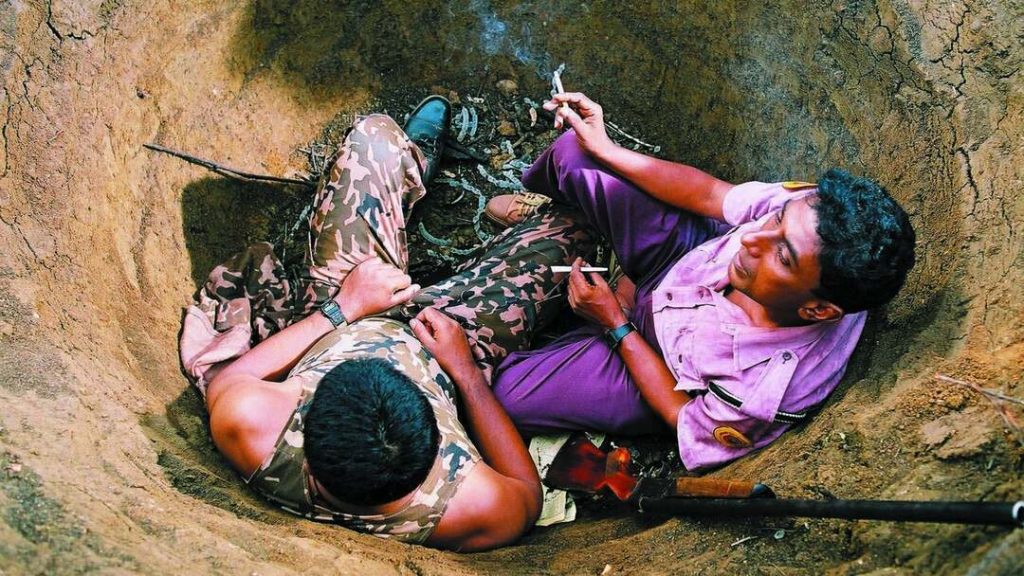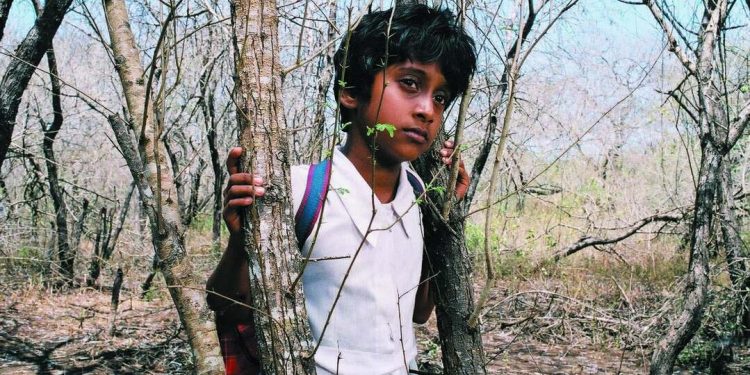Sulanga Enu Pinisa, also known as “The Forsaken Land,” is a 2005 Sri Lankan film directed by Vimukthi Jayasundara. This cinematic gem, which garnered significant attention on the international film festival circuit, explores the emotional and psychological turmoil of people living in a war-torn, desolate landscape. In this blog post, we’ll delve into this thought-provoking film, dissect its narrative and cinematography, and discuss why it’s a must-watch for any film enthusiast.
Plot and Narrative:
Sulanga Enu Pinisa presents a hauntingly poetic narrative set against the backdrop of a Sri Lankan village during a time of civil conflict. The story follows a family living in isolation, dealing with the trauma and fear of their surroundings. The film takes a minimalistic approach to storytelling, using sparse dialogue and evocative imagery to convey its themes. This approach may not be for everyone, but it serves to immerse the audience in the same sense of isolation and fear experienced by the characters.
The film is a meditation on the human condition, exploring themes of suffering, hopelessness, and survival. The characters’ struggle to find meaning in their forsaken existence is a central theme that resonates deeply. It’s a stark, unflinching look at the emotional and psychological consequences of war, poverty, and displacement.
Cinematography and Visuals:
Sulanga Enu Pinisa’s visuals are breathtaking and serve as a key component in telling the story. Cinematographer Channa Deshapriya’s work is nothing short of a revelation. The film is characterized by its long, unbroken shots, capturing the desolate beauty of the Sri Lankan landscape. These visuals, often punctuated by eerie silences, are powerful in conveying the starkness and vulnerability of the characters’ existence.
The film’s cinematography, combined with a muted color palette and meticulous attention to detail, creates a sense of unease and beauty simultaneously. It’s as if the landscape itself is a character in the film, reflecting the emotional turmoil of the protagonists.

Performance and Direction:
The cast delivers strong performances, especially the leading lady, Kaushalya Fernando. She portrays the mother, struggling to maintain a sense of normalcy and dignity in an abnormal world. Her silent expressions and nuances convey the pain and hopelessness that her character experiences. The rest of the cast is equally competent in their roles, contributing to the authenticity of the story.
Director Vimukthi Jayasundara’s vision and execution are nothing short of brilliant. He skillfully combines haunting visuals, deliberate pacing, and a minimalistic approach to storytelling to create a unique cinematic experience. His direction pushes the boundaries of traditional filmmaking, inviting viewers to engage with the film on an intellectual and emotional level.
Conclusion:
Sulanga Enu Pinisa (The Forsaken Land) is not a film for those seeking action-packed plots or conventional storytelling. Instead, it is an immersive and contemplative cinematic experience. The film invites viewers to reflect on the human spirit, the consequences of conflict, and the capacity for hope in the most challenging circumstances.
If you are a cinephile who appreciates thought-provoking, visually stunning, and emotionally resonant cinema, Sulanga Enu Pinisa should be on your watchlist. It’s a testament to the power of cinema to explore complex themes and provoke deep introspection.
So, grab a cozy seat, immerse yourself in the haunting landscapes of Sri Lanka, and prepare to be moved by the quiet brilliance of Sulanga Enu Pinisa. It’s a film that lingers in your mind long after the credits roll, a true cinematic masterpiece.
Check out the excerpt here and learn more at IMDB































